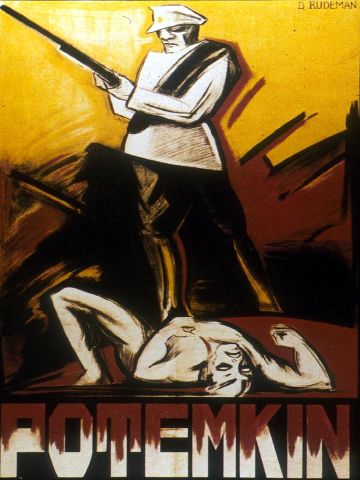
The Battleship Potemkin (1925), accompanied by a new arrangement of Edmund Meisel’s orchestral score, which Eisenstein himself authorized for the film’s Berlin premiere in 1926. The Battleship Potemkin was recognized from the start as a landmark work both for its innovative use of montage and for its sheer power as propaganda. In particular, the “Odessa steps” sequence is arguably the single most famous and widely quoted passage in the history of film. But in a sense The Battleship Potemkin has been the victim of its own effectiveness. Reissued over the years in various censored and reedited versions, Eisenstein’s great vision has not been seen for several decades in anything like what the director likely intended. This new version, overseen by the film archivist and historian Enno Patalas, attempts to reconstruct, as closely as possible, the film as it was presented in Moscow during its initial release.
The Soviets were inordinately fond of jubilees, so it was only fitting that for his second feature film Sergei Eisenstein would be commissioned to direct a multi-episode series marking the twentieth anniversary of the 1905 revolution in Russia. The first episode was originally intended to focus mainly on the strike that took place in St. Petersburg in October 1905, with the June 1905 mutiny aboard the battleship Potemkin to serve as a prologue. However, bad weather and logistical difficulties compelled Eisenstein and his crew to relocate to Odessa, and the Potemkin mutiny expanded into a full-fledged feature in its own right. (See Richard Taylor’s meticulously researched book The Battleship Potemkin: The Film Companion (2000) for further information on the film’s production history and critical reception.) While Eisenstein’s debut feature Strike (1924) still dazzles through its sheer stylistic daring, in The Battleship Potemkin he consolidated his skills as a total filmmaker, demonstrating greater control over narrative structure and pacing. The film is divided into five acts--“Men and Worms,” “Drama on the Quarterdeck” “An Appeal from the Dead,” “The Odessa Steps” and “Meeting the Squadron”--its structure deliberately recalling classical tragedy.
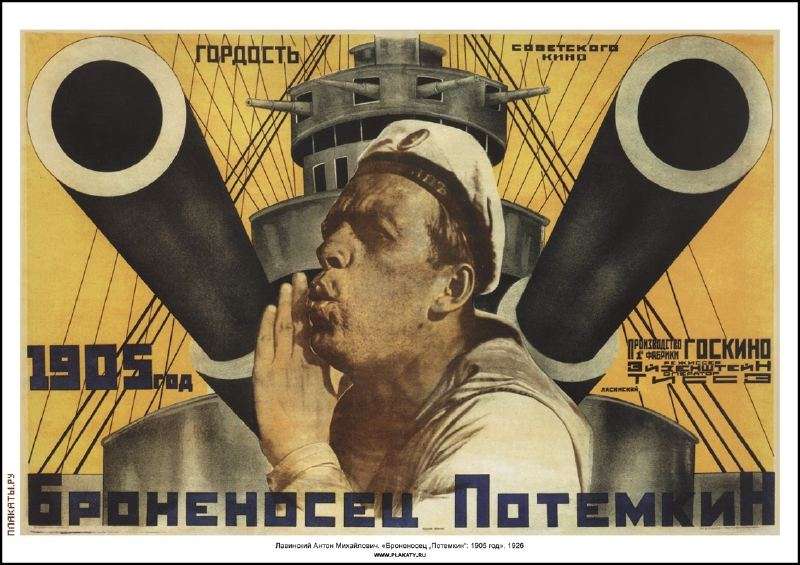
While Eisenstein was always interested more in creating an effective and well-constructed film than in being literally faithful to the historical record, many of the key images in the script were in fact inspired by actual events associated with the Potemkin mutiny: the sailors’ refusal to eat borsch made from maggot-infested meat; the revolutionary activists Matyshenko and Vakulenchuk (spelled Vakulinchuk in the film) using that incident as a pretext to incite the other sailors to mutiny; the arrival of the battleship into the Odessa port with a red flag; the throngs of townspeople lining up to view Vakulenchuk’s corpse; and the Potemkin being greeted by cheering sailors on another ship. There was even a massacre of civilians by police on the famed steps leading down to Odessa’s port, though that was just one part of the civil strikes that occurred throughout the city and the resulting crackdown by the police and Cossacks. It should be noted that Eisenstein didn’t include at least one very significant event: the massive fire that devastated the Odessa port during the strike and claimed many lives. Neal Bascomb provides a compelling and detailed account of the mutiny in his recently published book Red Mutiny: Eleven Fateful Days on the Battleship Potemkin (2007).
In addition to its innovative and much-analyzed photography and editing, the film was noteworthy for its unusual mix of professional and non-professional actors, based on the principle of typage or casting primarily according to physical types. Eisenstein’s assistant Grigori Aleksandrov played Gilyarovsky. The role of Vakulenchuk was filled by Aleksandr Antonov, a member of the Proletkult theater troupe in which Eisenstein had worked before moving into cinema. The film director Vladimir Barsky, an important figure in early Soviet cinema, played the role of Captain Golikov. Eisenstein also challenged the norms of commercial cinema by not relying on a single protagonist or romantic coupling to shape the narrative, emphasizing the notion of a “mass protagonist” instead. The Battleship Potemkin premiered at the Bolshoi Theater in December 1925 and was released in Moscow in January 1926. Barely completed in time for the premiere, it was initially more of a rough cut, as Richard Taylor has pointed out. The orchestral accompaniment, as was common practice at the time, was culled from pre-existing works in the classical repertoire. At its two main Moscow engagements, the theater exteriors were decorated to resemble battleships, and the staff were dressed in sailors’ outfits. Posters touted it as “the pride of Soviet cinema,” boasting of 300,000 admissions in the first three weeks alone. What really sealed the film’s success, however, was the sensational reception at its April 1926 Berlin premiere. The Soviet authorities actually sold the original negative to the Germans--a move that seems inconceivable today--but they retained the right to request new prints from it. Fearing a threat to “the public order,” the German censors initially banned the film outright but later demanded a number of cuts, mainly due to violent imagery. These included some of the shots depicting the body of young boy trampled on the Odessa steps. The film director Piel Jutzi was brought in to adapt the film for German audiences; among other things, he divided it into six parts instead of five.
Naum Kleiman, the foremost Eisenstein scholar, has speculated that Eisenstein’s trip to Germany before the premiere was in fact to oversee the film’s reediting, so he may well have had some input into the German distribution version. The director also guided Edmund Meisel’s work on the score, encouraging him to emphasize rhythm over melody. For instance, the music accompanying the battleship’s climactic meeting with the squadron has a mechanical quality that underscores the film’s ties with the Soviet artistic movement known as Constructivism. Ultimately, cultural impact of The Battleship Potemkin in Germany cannot be overstated. Besides becoming a great popular success, it influenced artistic figures as ranging from Fritz Lang to Bertolt Brecht and the theater directors Erwin Piscator and Max Reinhardt. Not only did the film’s reputation in Germany help raise awareness of it in countries such as England and the United States, it even resulted in a second release of the film in the Soviet Union during the summer of 1926. However, the Soviet authorities’ decision to sell the negative to the Germans meant it would not survive in its original version.
The pressures of censorship and the vagaries of distribution over the years have resulted in the situation that The Battleship Potemkin survives in several different versions, each with their own set of limitations. For many years the Museum of Modern Art circulated an English language version based on an authoritative print donated by the Eisenstein scholar Jay Leyda and supposedly provided by Eisenstein himself, but they altered the original intertitles, among other things making them longer and thus slowing the pace of the film. Another version with English titles was prepared by the British leftist filmmaker Ivor Montagu. In 1950, the film was reissued in the Soviet Union in a version supervised by Grigori Aleksandrov and accompanied by a serviceable, if pedestrian, score by Nikolai Kryukov. According to Enno Patalas, this version was missing some seventy shots, suffered from substantially reworked intertitles, and even reordered some of the footage following earlier, similarly corrupted versions. For example, the visceral impact of the opening of the Odessa steps massacre--in which the title “And suddenly…” is followed by a series of jump cuts of a woman’s head jerking back--was blunted by preceding it with shots of the soldiers’ boots and rifles to provide more of a conventional cause-and-effect structure. This version also used step-printing (the repetition of individual frames) to slow the movement down for projection at sound speed.
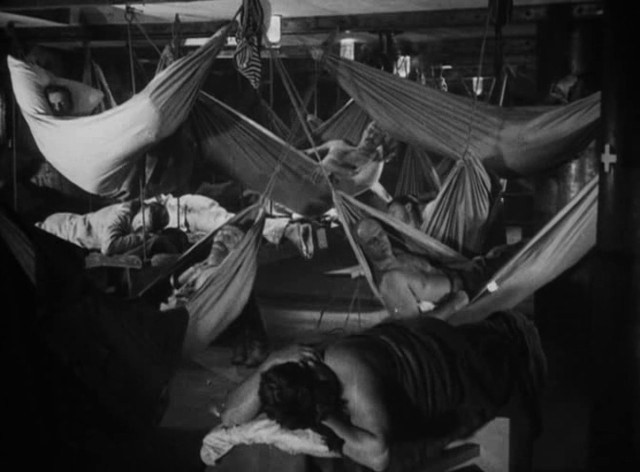
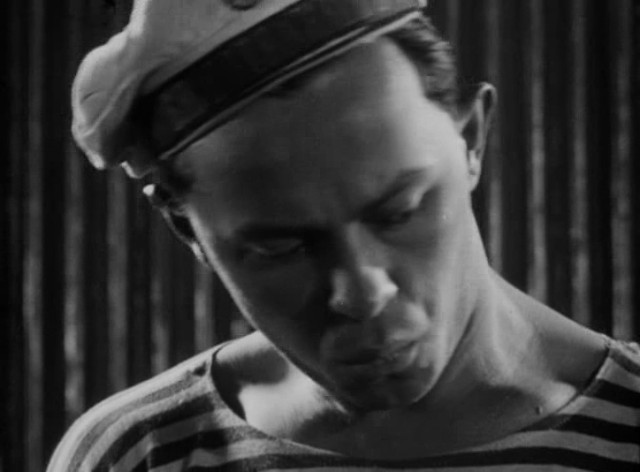
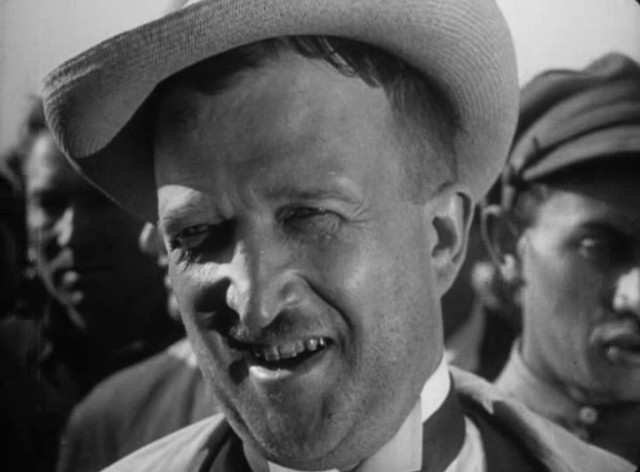
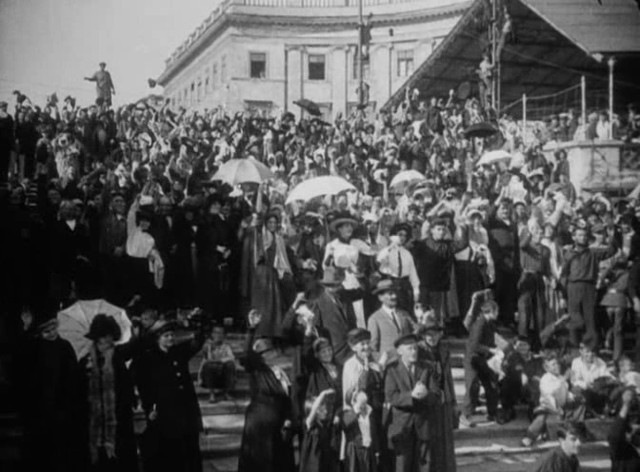

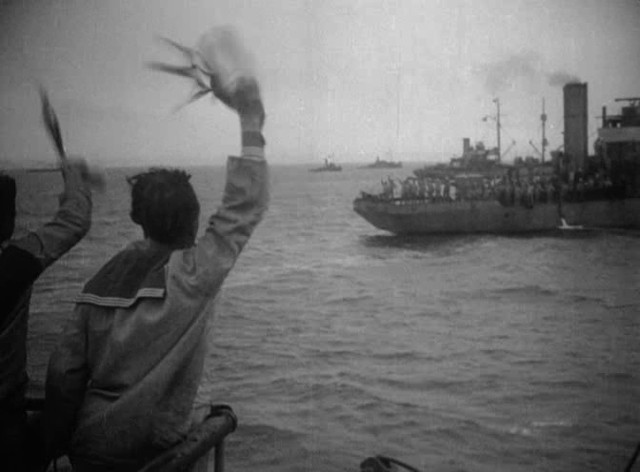
In 1976, the Soviet filmmaker Sergei Yutkevitch, in collaboration with Naum Kleiman, created a new version that was the most complete and authentic to date, but its pacing was again compromised by the use of stretch printing, and it was still missing fifteen shots compared to the current reconstruction. Thus, while it contained fewer shots, it still ran significantly longer than the 2005 reconstruction. Also, one could argue that the excerpts from the Shostakovich symphonies chosen to accompany the print added to its lugubrious atmosphere. The 2005 reconstruction relies heavily on the Jay Leyda print and written recollections for its shot list, but whenever possible uses early generation prints held at the British Film Institute because of their superior photographic quality. (The original negative still exists at Gosfilmofond of Russia, though it bears the traces of German censorship and according to the archive is too fragile to use for printing, as Patalas related in a 2005 article in the Journal of Film Preservation.) The intertitles recreate the original text as closely as possible, including the restoration of a Trotsky quotation as the epigraph; predictably, it had been replaced by a Lenin quote when Trotsky fell out of favor. The length of the individual title cards is also now more in keeping with the film’s rhythm as a whole, which is no small point since Eisenstein viewed them as a crucial component of his montage aesthetic. Lastly, as Eisenstein intended from the start, this version uses hand-coloring to tint the Potemkin’s flag red during certain sequences. (TCM)
http://keep2s.cc/file/7b676e42b2c49/Bronenosets_Potyomkin.avi
http://keep2s.cc/file/30958caea4589/Bronenosets_Potyomkin_%28en%29.srt
http://keep2s.cc/file/898beaa599852/Bronenosets_Potyomkin_%28fr%29.srt
http://keep2s.cc/file/bc0a340321a2f/Bronenosets_Potyomkin_%28sp%29.srt
http://rapidgator.net/file/ec2c46e5a3f93eeb10f163026f5d7cc4/Bronenosets_Potyomkin.avi.html
http://rapidgator.net/file/b86575f1471bd23689f136167aa78e26/Bronenosets_Potyomkin_(en).srt.html
http://rapidgator.net/file/3ddfe13b9cbc8b423ee8b4c522f4a705/Bronenosets_Potyomkin_(fr).srt.html
http://rapidgator.net/file/b4dfc394151ce8d60ea2bcd385db5295/Bronenosets_Potyomkin_(sp).srt.html
Language:Russian
Subtitles:English, French, Spanish